Not Your Usual Single Turbo Build
#1
Not Your Usual Single Turbo Build
The following is an overview of my single turbo build for my third gen RX7. As primarily a track car I was looking for something more reliable than the stock twins. With continued track use I was finding stock manifolds and turbo housings would warp and crack. Power goals were a conservative 300 RWHP. This would allow use of the simplicity of the stock injectors and a swing arm wastegate.
The project started with a Garrett GT3076 ball bearing turbo with a T3 housing and 1.06 AR. The manifold was fabricated with ½” thick mild steel plate and 2”dia stainless pipe.
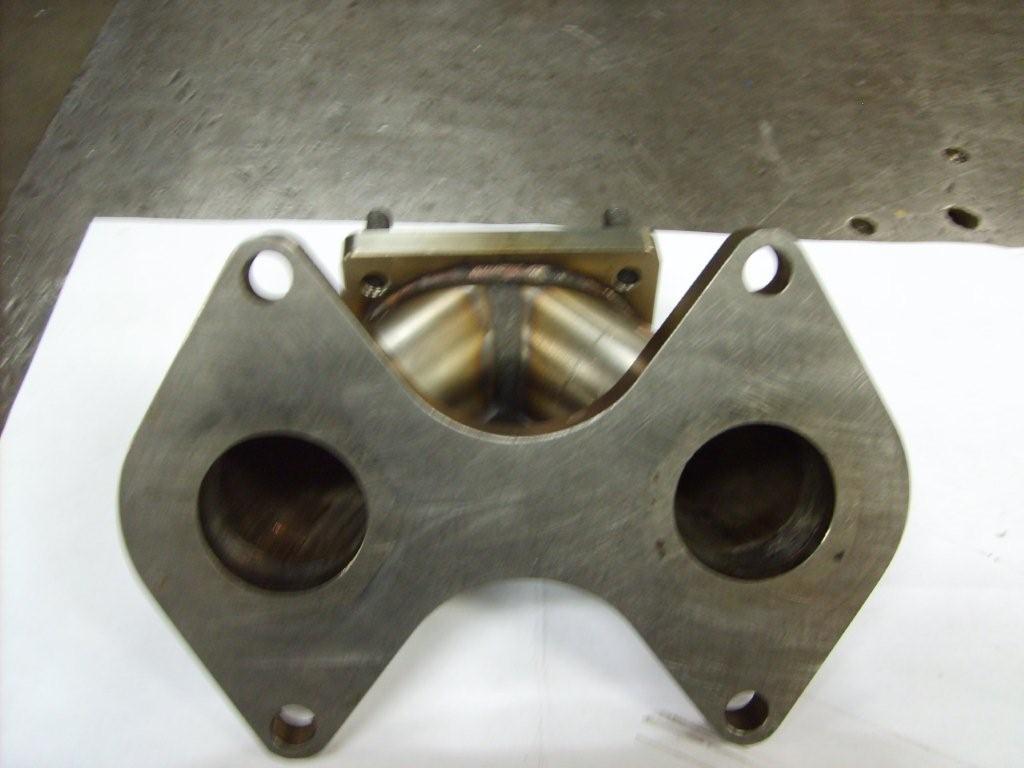
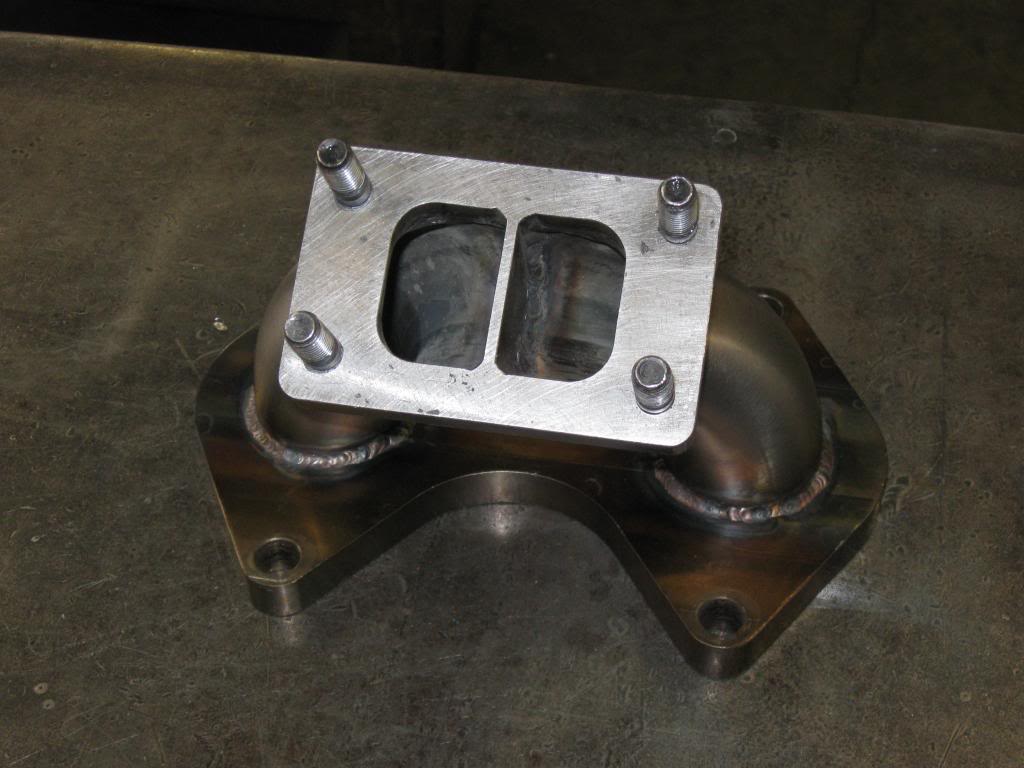
Heat management was a key consideration and a stainless shield keeps the lower intake manifold cool. The short runners and lack of external wastegate allowed a very low placement of the turbo.
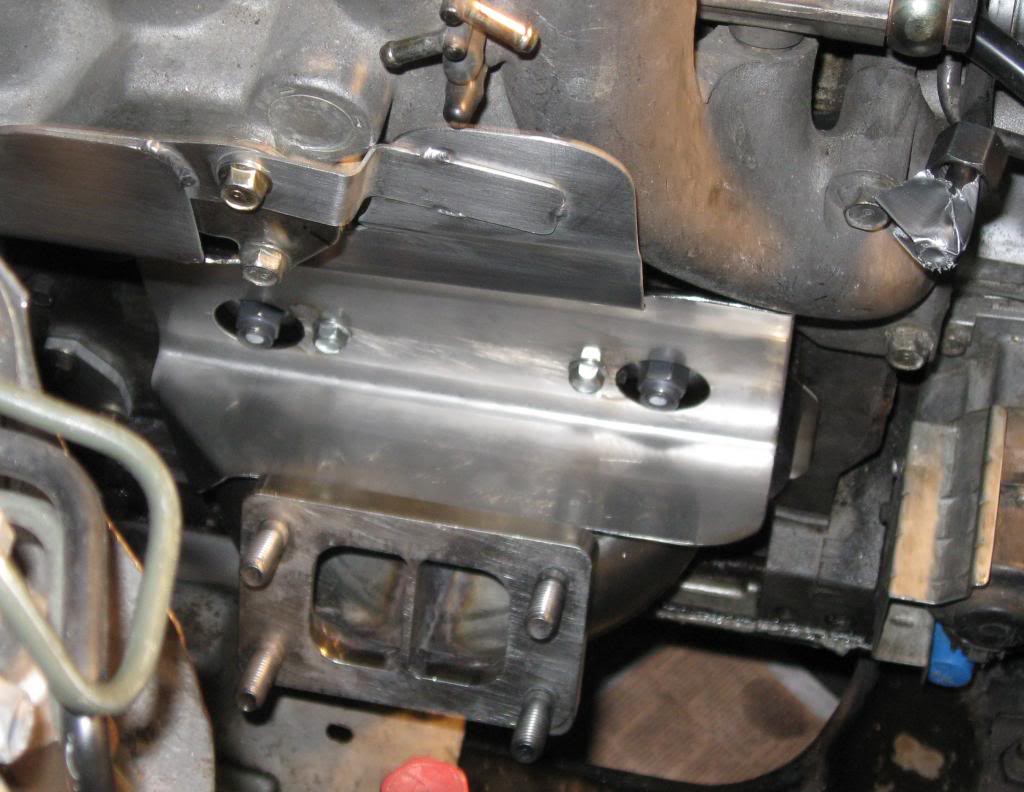
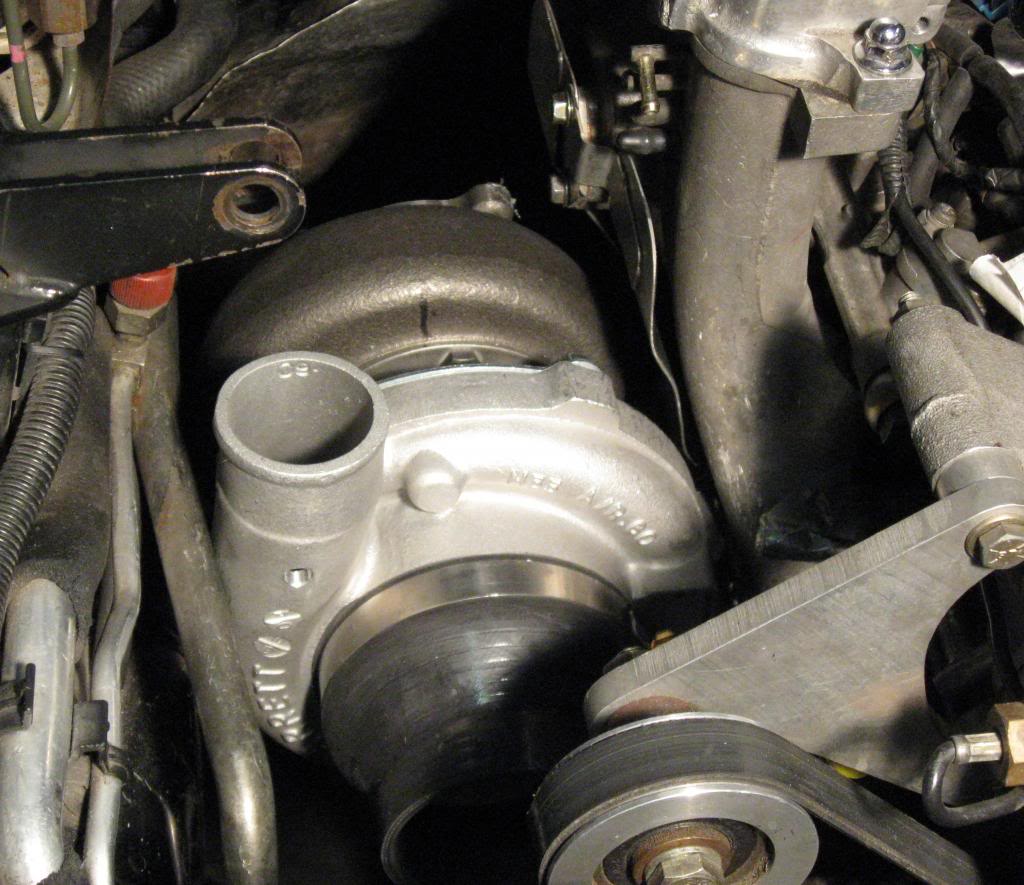
A Garret stainless turbo heat shield was modified with front plate to keep the heat away from the oil and coolant lines. For reliability they were fabricated from steel tubing. The banjo fittings are stock FD. The oil return was machined from plate steel and pipe. Once away from the hot side of the turbo a fabric braided hose with -8 AN fittings connects to a similar adapter at the block.
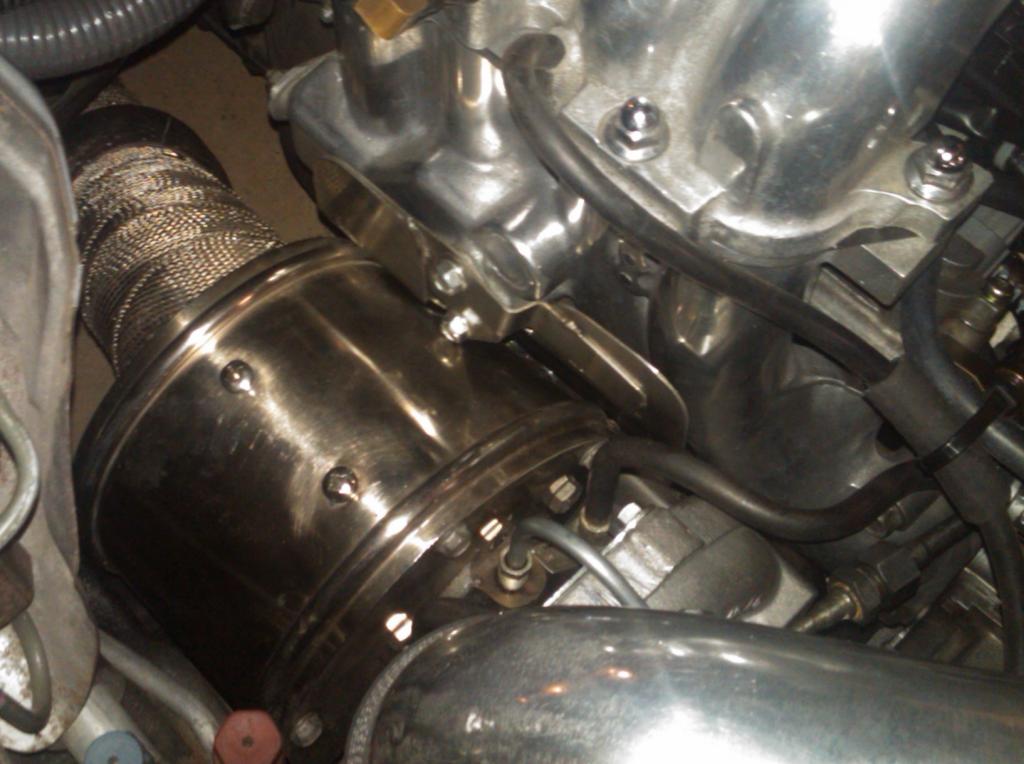
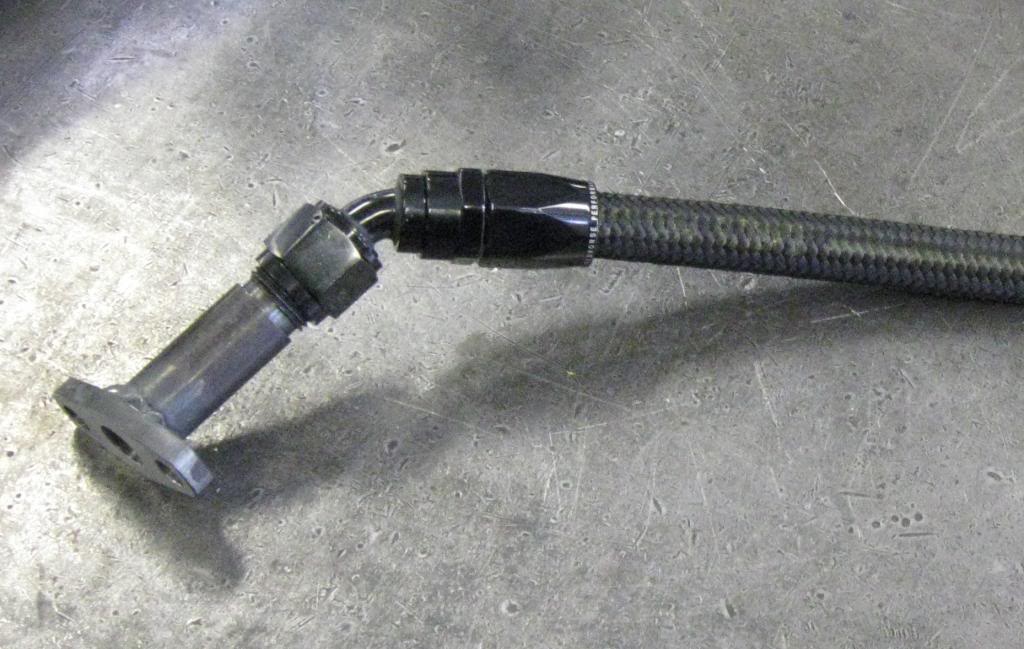
A modified M2 cold airbox is used with a K+N filter. The Tial blow off valve is plumbed back to the intake for better response on track.
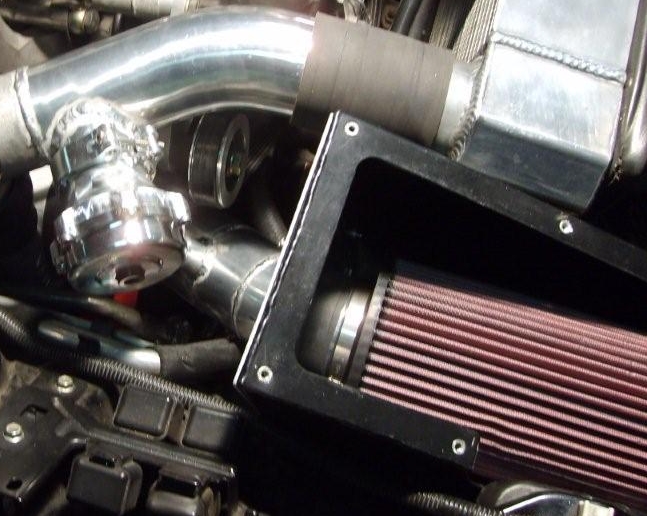
The downpipe is made from 3” stainless tubing using a premade 5 bolt flange from ATP. Sheet stainless was used to join the flange to the 3” downpipe tubing. To support the whole assembly a bracket was made to join the transmission to the flange at the end of the downpipe.
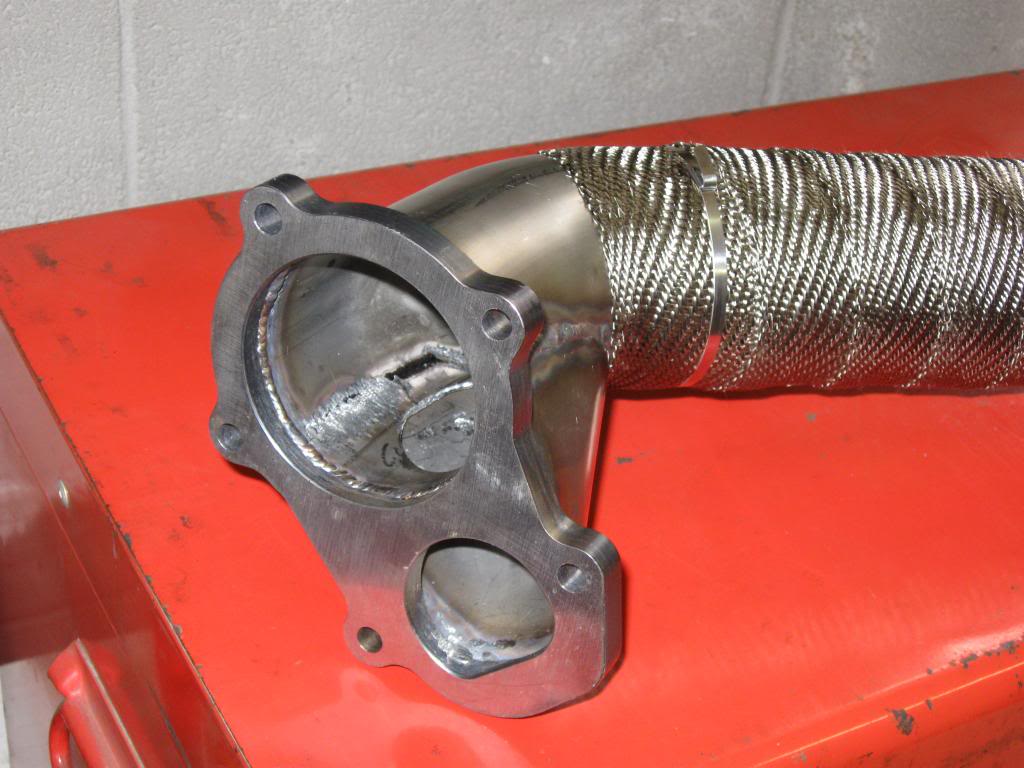
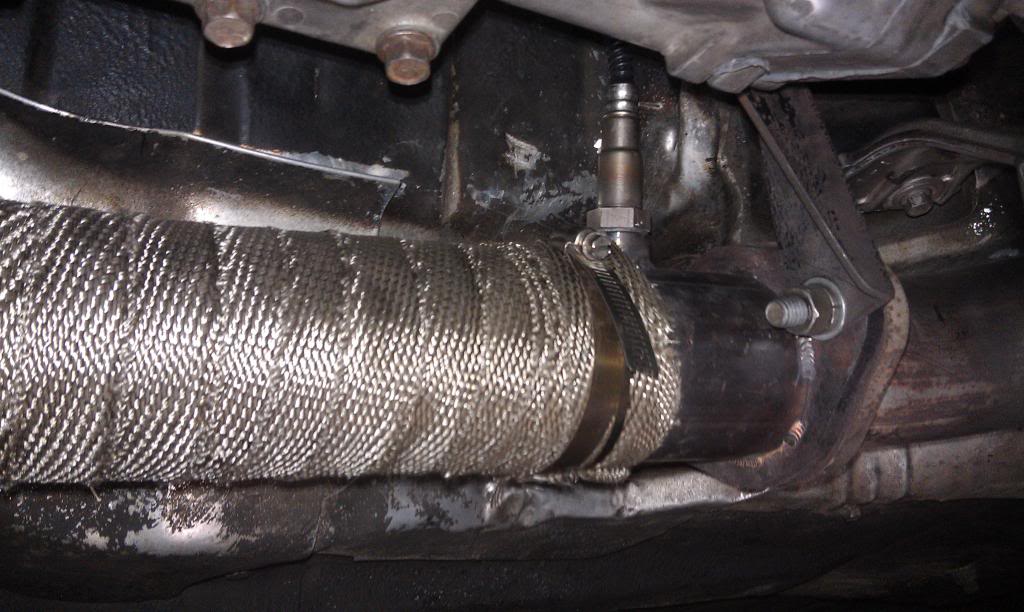
Below is a picture of the finished product after some street tuning, which actually went very well. Track tuning would turn up a few things we didn’t expect.
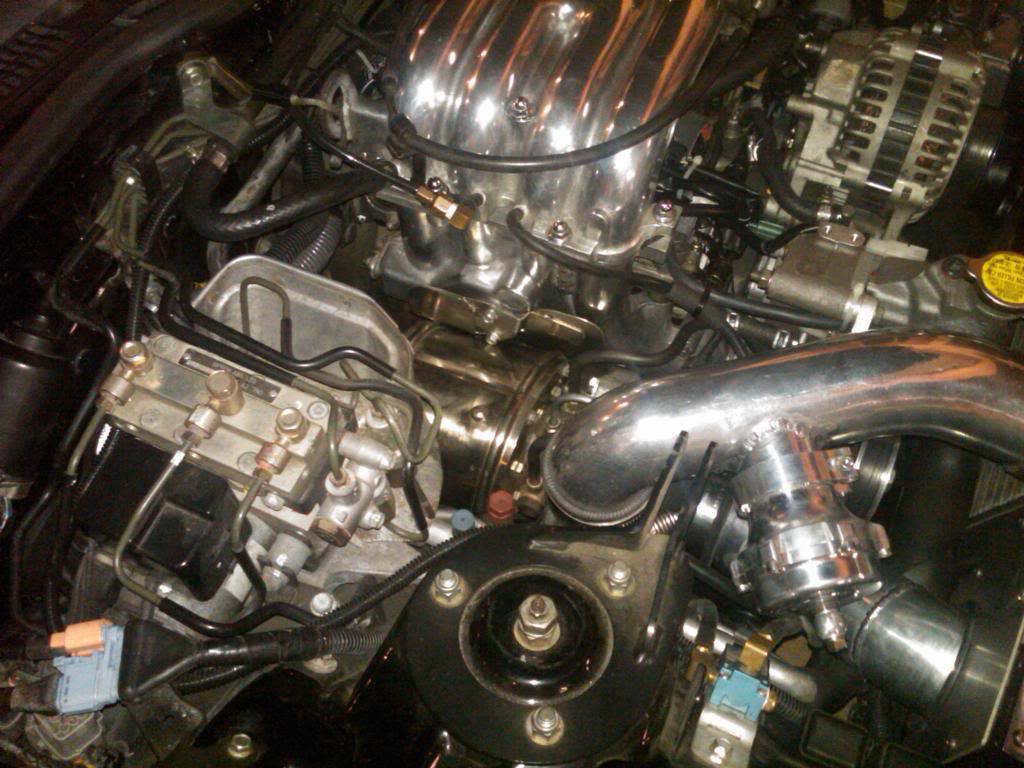
The project started with a Garrett GT3076 ball bearing turbo with a T3 housing and 1.06 AR. The manifold was fabricated with ½” thick mild steel plate and 2”dia stainless pipe.


Heat management was a key consideration and a stainless shield keeps the lower intake manifold cool. The short runners and lack of external wastegate allowed a very low placement of the turbo.


A Garret stainless turbo heat shield was modified with front plate to keep the heat away from the oil and coolant lines. For reliability they were fabricated from steel tubing. The banjo fittings are stock FD. The oil return was machined from plate steel and pipe. Once away from the hot side of the turbo a fabric braided hose with -8 AN fittings connects to a similar adapter at the block.


A modified M2 cold airbox is used with a K+N filter. The Tial blow off valve is plumbed back to the intake for better response on track.

The downpipe is made from 3” stainless tubing using a premade 5 bolt flange from ATP. Sheet stainless was used to join the flange to the 3” downpipe tubing. To support the whole assembly a bracket was made to join the transmission to the flange at the end of the downpipe.


Below is a picture of the finished product after some street tuning, which actually went very well. Track tuning would turn up a few things we didn’t expect.

#2
Track Reliability
The first issue I ran into was controlling the boost. There were two issues at work. The first was the flow path from the wastegate to the downpipe. This was corrected with some grinding. At the same time we increased the wastegate size to 33 mm replacing the stock flap with a Chevy exhaust valve. Unfortunately since I had the turbo off the car I ended up doing both fixes at the same time so it’s unclear if this was overkill, but it solve the problem
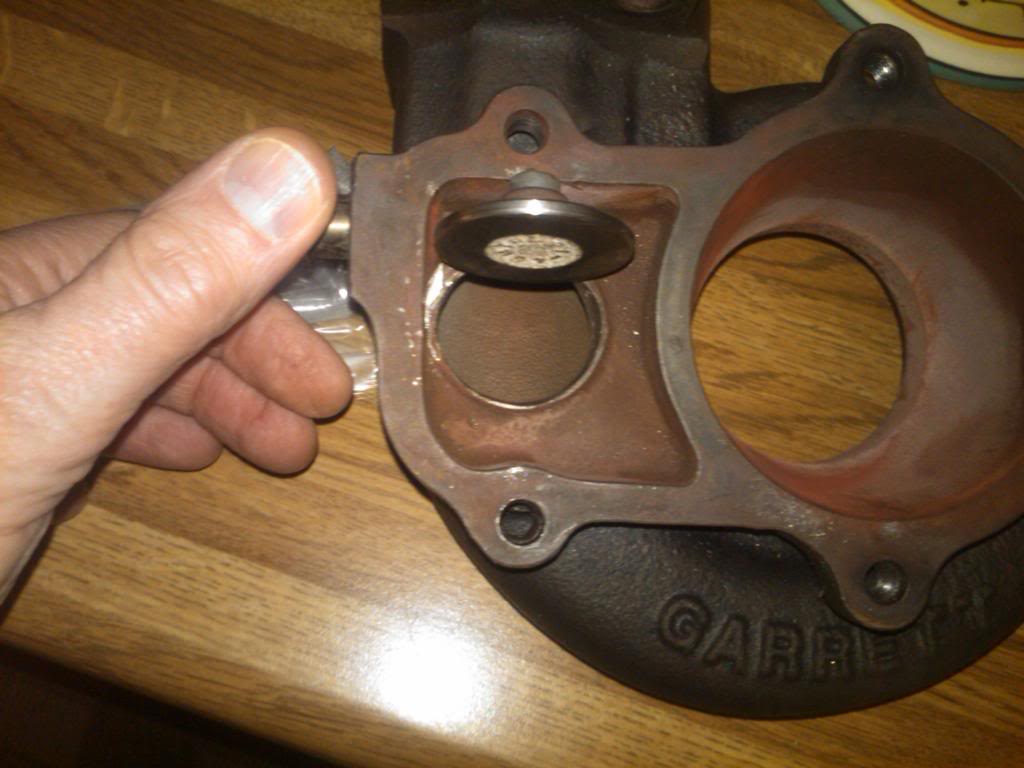
The next issue was warpage of the downpipe flange. Part of the issue seemed to be due to the nature of the 5 bolt design which really didn’t seem to support the flange area very well. We ended up going to ¾” thick mild steel and adding a center support with a slight undercut as this was typically the area that would move. At the same time I upgraded to ARP stainless studs.
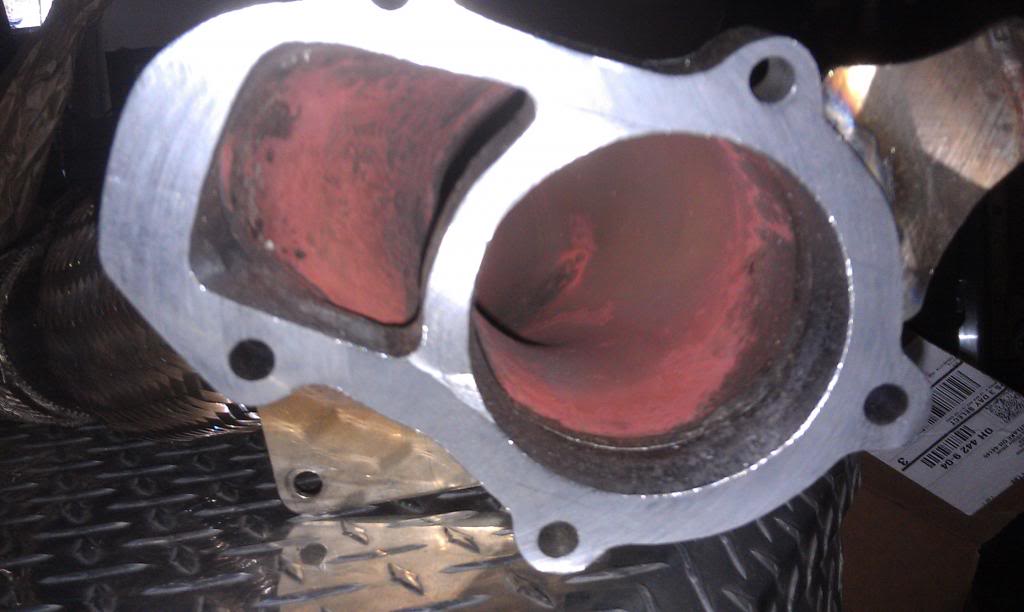
The last issue was the loosening studs and nuts holding the downpipe to the turbo outlet. I was told by several “experts” that is was due to vibration and the turbo was not supported properly. Finally after a lot of experimentation Rob Golden at Pineapple Racing had the answer.
Rob indicated that due to the extreme heat at the track the various components need room to move in a controlled way. When this is not done things loosen up. The solution is to leave clearance surrounding the studs and while brackets need to support the load they must also allow movement as things heat up. My bracket at the end of downpipe was restricting movement and that needed to be addressed.
The solution was to modify the existing bracket with a longitudinal slot. A bolt is double nuted to allow a gap but to support the downpipe. The picture below shows the bracket without the companion piece welded to the downpipe.
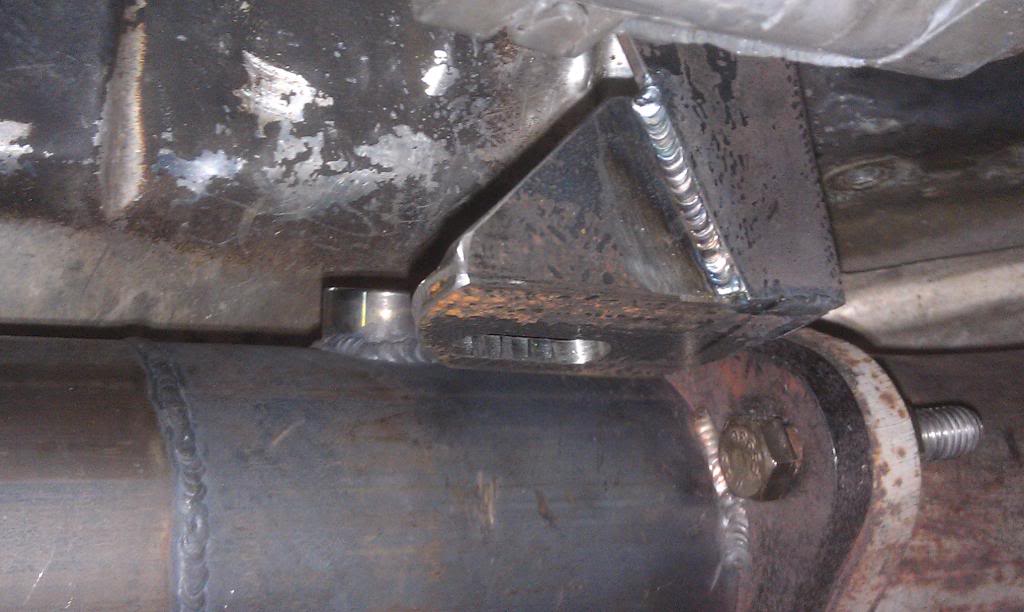
The next photo shows the completed assembly with the plate welded to the DP.
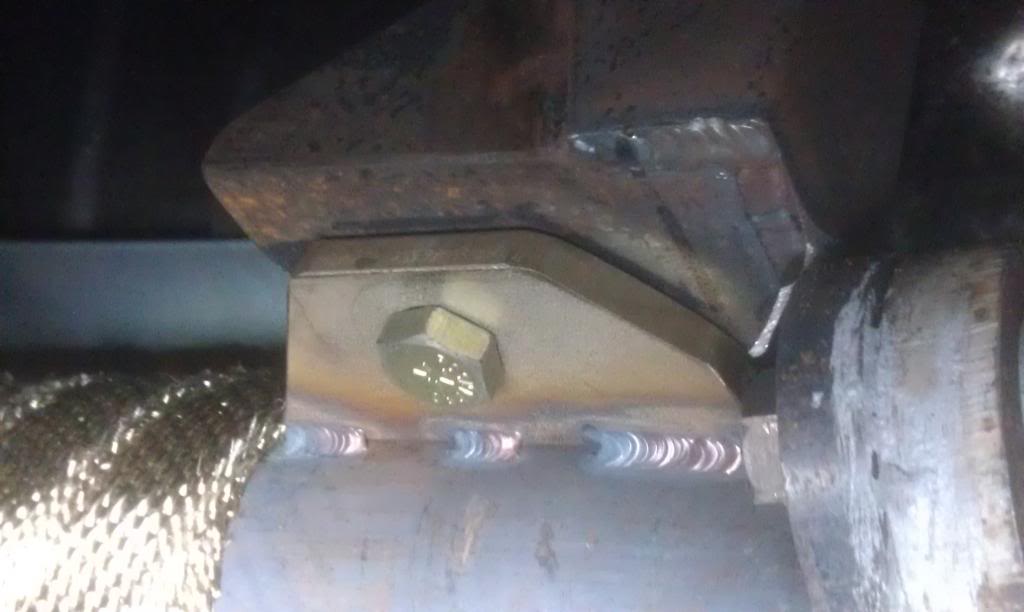
Acknowledgements
The superb fabrication work was done by my friend Fred Giamo, a machinist by trade. He lost count of the hours he has into the project and fortunately we are still friends. Although I think this was his first and last turbo rotary project. Another friend, John Overly, a chemical engineer was always available to weigh in on material choices and add testing advise. The Power FC Forum giving me the knowledge and confidence to tune my own car. And lastly, Rob Golden at Pineapple Racing who seems to be one of the few people out there with road race experience with turbo charged RX7s.

The next issue was warpage of the downpipe flange. Part of the issue seemed to be due to the nature of the 5 bolt design which really didn’t seem to support the flange area very well. We ended up going to ¾” thick mild steel and adding a center support with a slight undercut as this was typically the area that would move. At the same time I upgraded to ARP stainless studs.

The last issue was the loosening studs and nuts holding the downpipe to the turbo outlet. I was told by several “experts” that is was due to vibration and the turbo was not supported properly. Finally after a lot of experimentation Rob Golden at Pineapple Racing had the answer.
Rob indicated that due to the extreme heat at the track the various components need room to move in a controlled way. When this is not done things loosen up. The solution is to leave clearance surrounding the studs and while brackets need to support the load they must also allow movement as things heat up. My bracket at the end of downpipe was restricting movement and that needed to be addressed.
The solution was to modify the existing bracket with a longitudinal slot. A bolt is double nuted to allow a gap but to support the downpipe. The picture below shows the bracket without the companion piece welded to the downpipe.

The next photo shows the completed assembly with the plate welded to the DP.

Acknowledgements
The superb fabrication work was done by my friend Fred Giamo, a machinist by trade. He lost count of the hours he has into the project and fortunately we are still friends. Although I think this was his first and last turbo rotary project. Another friend, John Overly, a chemical engineer was always available to weigh in on material choices and add testing advise. The Power FC Forum giving me the knowledge and confidence to tune my own car. And lastly, Rob Golden at Pineapple Racing who seems to be one of the few people out there with road race experience with turbo charged RX7s.
#3
Thanks Gordon. So far I have about 10 track hours with the current setup and no other issues. Coolant and oil temps have run anywhere from 5 to 10 degres lower than with the non seq twins. I've just finalized some changes to the exhaust so I may now be able to optimize the tune.
The project has been a learning experience in what I thought would be a simple build. I wrote this up to help others serious about tracking their FDs reliably and would be happy to share what I can.
Alan
The project has been a learning experience in what I thought would be a simple build. I wrote this up to help others serious about tracking their FDs reliably and would be happy to share what I can.
Alan
Thread
Thread Starter
Forum
Replies
Last Post
armans
3rd Generation Specific (1993-2002)
5
08-15-15 09:08 PM




